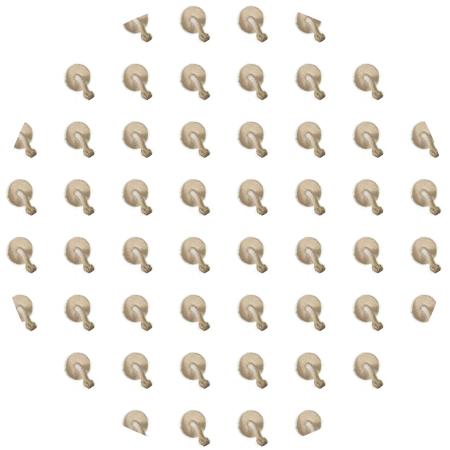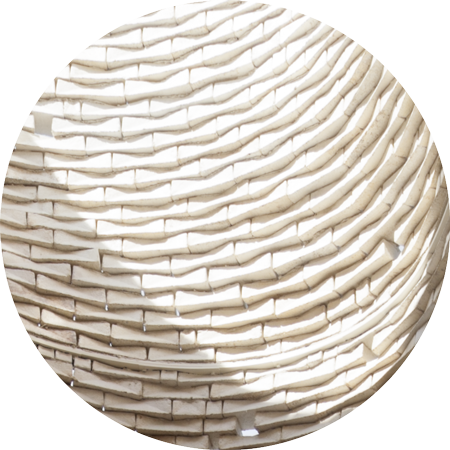-


Mycotecture
The “Hy-Fi” biodegradable mushroom-brick tower was designed by architect David Benjamin from “The Living” architects for the MoMA PS1 courtyard, New York, 2014. (Image © Amy Barkow / Barkow Photo)
-
We’ve all heard of DIY, but what about GIY? The ability to “Grow It Yourself” is now being offered by a materials science company called Ecovative Design, with its sustainable biomaterial grown from a species of mushroom. The myco-material is a self-assembling matrix of super-strong polymers that naturally occur in mycelia. It is lightweight, durable and completely biodegradable. Since it grows into the shape of the moulds provided, it requires very little energy for production and, like 3D-printed plastics, can be moulded into any shape. This makes it a potential contender for replacing petrol-based materials such as polystyrene for packaging, building and industry.
Ecovative’s compostable custom moulds for packing materials could replace polystyrene, which currently takes up 25 percent of our landfills. (Photo courtesy Ecovative)
-
Ecovative Design is a material science company founded by Eben Bayer and Gavin McIntyre, developing home-compostable bioplastics based on mycelium that are high-performance, environmentally responsible alternatives to traditional plastic foam packaging, insulation, and other synthetic materials. It was developed from a university project they did at the Inventor’s Studio course at the Rensselaer Polytechnic Institute, New York. In an attempt to minimise styrofoam waste, The company has produced protective packaging for companies including Dell, Puma SE, and Steelcase. In 2013, Ecovative won the Buckminster Fuller Challenge, and was awarded the institute’s highest design award for Socially Responsible Design.
The myco-material’s production process is surprisingly simple. Agricultural by-products like corn and seed husks are locally sourced, combined with the mycelium, and placed into plastic moulds. Left in the dark, the mycelium digests the seed husks and forms its fine, root-like network. After five days the mycelium has filled the mould and any undigested organic materials are incorporated into the structure. The resulting product is fire- and water-resistant, withstands high impact, and insulates against heat and sound.
Ecovative has already begun exploring a number of practical applications including packaging materials, building insulation, structural biocomposites called “Myco Board”, and even surfboards. In June 2014, David Benjamin from the architecture firm The Living composed a giant biodegradable tower installation at MoMA PS1 in New York from Ecovative’s custom-made “mushroom” bricks – demonstrating its potential applications for architecture. I (ssl)

The Hy-Fi double-tower made from myco-material bricks. (Video courtesy Evocative)
Cross-section from the“Tiny Mushroom House”, 2013. Evocative’s fungi-based biomaterial can grow to fit any space, making it a good candidate for housing insulation. (Photo courtesy Ecovative)
-
Search
-
FIND PRODUCTS
PRODUCT GROUP
- Building Materials
- Building Panels
- Building technology
- Façade
- Fittings
- Heating, Cooling, Ventilation
- Interior
- Roof
- Sanitary facilities
MANUFACTURER
- 3A Composites
- Alape
- Armstrong
- Caparol
- Eternit
- FSB
- Gira
- Hagemeister
- JUNG
- Kaldewei
- Lamberts
- Leicht
- Solarlux
- Steininger Designers
- Stiebel Eltron
- Velux
- Warema
- Wilkhahn
-
Follow Us
Tumblr
New and existing Tumblr users can connect with uncube and share our visual diary.
»Intelligence starts with improvisation.«
Yona Friedman
Keyboard Shortcuts
- Supermenu
- Skip Articles
- Turn Pages
- Contents


